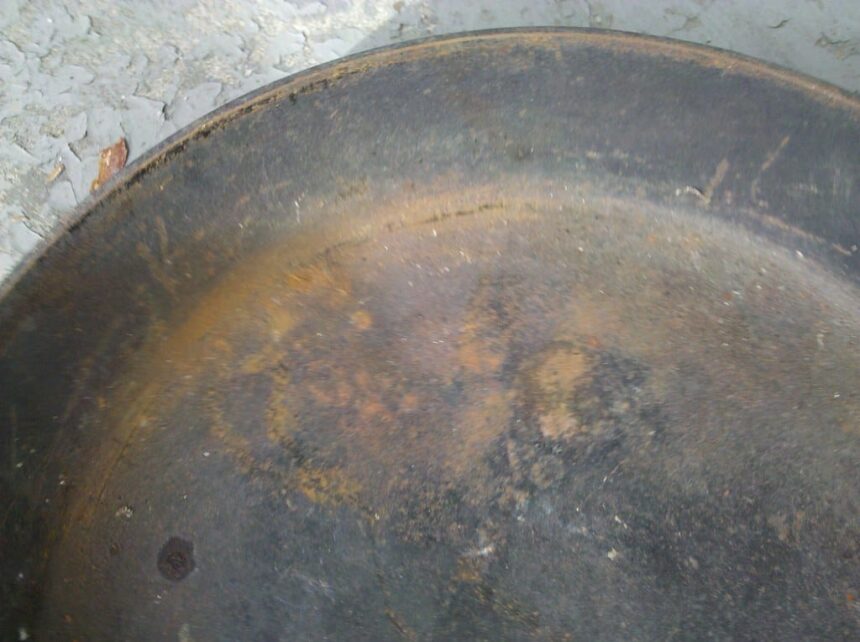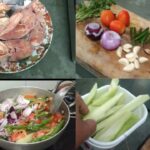
A cast-iron skillet is a versatile, literally well-oiled cooking machine. Its simplicity—a solid hunk of metal—makes it about as close to indestructible as a cooking item can be. It also means that a skillet can be used on the cooktop, in the oven, or on a campfire.
They’ve been in US kitchens, inside and outside, for centuries. Cast iron cookware dates back to 3rd century China and was throughout Europe by the 1600s. Its production boomed in the 1700s and 1800s, but with the introduction of aluminum and plastic cookware in the 20th century, cast iron dropped in popularity. But now it’s back.
Because these skillets last for decades, even centuries, it’s possible to find them at antique shops and thrift stores. The problem is they are often rusty and crusty and look like they might never cook another biscuit. Well, it turns out that sprucing up that old cast iron isn’t all that difficult, and it is very rewarding.
A Rusty Skillet
Source: TheDCpicker/YouTube
While a cast-iron skillet is long-lived, keeping it in good shape does require ritualistic caretaking. Iron rusts if exposed to water for an extended amount of time, so with cast iron, it’s important to dry it thoroughly after every use, both with a dishtowel and the stovetop (evaporating off any remaining moisture). Then, while hot, the skillet needs to be wiped down with oil.
Failure to do this will usually result in rust. Seeing the rust can be a little frustrating, and, essentially, when we find those rust skillets at the thrift shop, what’s has happened is the pan wasn’t cared for. Luckily, it can be revived in just a couple of hours, if that.
Tackling the Rust
Source: A Chef and His Spoon/YouTube
In general, people steer clear of abrasive scrubbers when cleaning cast iron, but with a rusty piece, it’s appropriate to come armed with steel wool and/or sandpaper. The idea is to scrub away all of the loose rust. This won’t turn the skillet black, but it’ll make it look notably cleaner.
Damaged pieces might need more attention. One method for removing thick layers of rust is to soak the skillet in a vinegar-water mixture, checking it often and scrubbing away what is possible. This, however, won’t likely be necessary.
Cleaning the Skillet
Once the rust has been scrubbed away, the skillet needs a good wash with warm water (and soap if you wish). The goal here is to remove all of the flakes of rust and any of the dust that might remain. At this point, we should switch back to a non-abrasive sponge or washrag.
Drying the Iron
Of course, it’s incredibly important to now thoroughly dry the cookware, first with a towel and then on the stovetop. This step is a make-or-break-it moment because if the iron isn’t completely dry, it will probably rust. It will need to be dried this way after every wash.
Seasoning the Skillet
Source: Martha Stewart/YouTube
Cast iron cookware needs to be “seasoned”, which is essentially baking a layer (or many layers) of cooking oil onto the surface. When the oil gets hot to its smoking point, it creates a semi-permanent, protective layer over the surface of the iron.
- The oil: There are tons of debates as to which type of oil to use when seasoning cast iron. More or less, anything will work, but canola oil (get organic!), peanut oil, and grapeseed oil are good choices because they have high smoke points.
Apply the oil with a lint-free rag (or paper towel if you must), covering every inch of the skillet, handle, and all. Then, put the oiled skillet in an oven at 350 degrees for an hour. Stick some foil or something beneath it to catch any oil that might drip.
Using the Skillet Anew
After re-seasoning the cast iron skillet, it’s a good idea to use avoid delicate foods—like tofu scramble or biscuits— and acidic foods—tomato sauce, wine deglazes—for a few more uses. Cast iron skillets make excellent roasted vegetables, and roasting veg incrementally thickens the seasoned layer on the skillet. It’s the perfect thing to use early in the process.
A well-seasoned cast-iron skillet is relatively non-stick. It isn’t as slick as Teflon, but it also isn’t going to leave bits of plastic in food. The protective layer thickens and revitalizes every time we use the skillet, so the more we cook in it, the better it functions.
Cast iron skillets are (in some author’s opinion) the absolute best for making:
- Roasted potatoes, Brussels sprouts, sweet potatoes, beets, garlic, etc.
- Biscuits
- Cornbread
- Pizza
- Scrambles
- Stovetop home fries
- Cauliflower wings
- “Grilled” onions
- Stir-fries
- Hash browns
- Caramelized anything
- Skillet-fried anything
- Cookies









